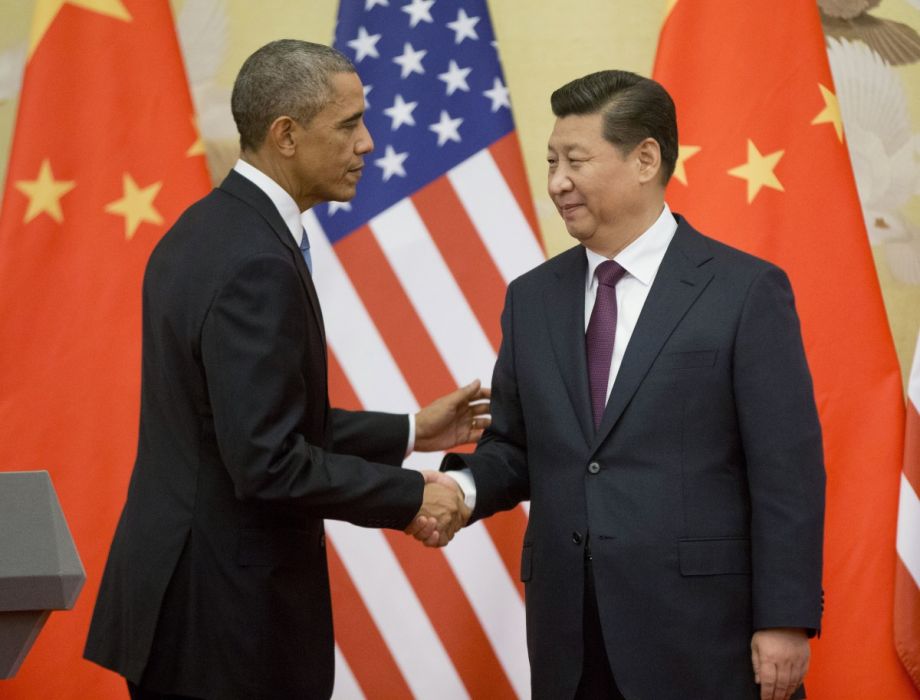
With last year’s U.S.-China Climate Accord came a new focus on municipal sustainability. Yes, power plants and national standards got most of the glory (and rage), but Presidents Obama and Xi Jinping also tackled regional emissions, directing local governments in both countries to “share city-level experiences with planning, policies and use of technologies.”
According to a report released today, California is living up to its reputation as the early adopter who liked urban climate collaboratives before they were cool. The paper, compiled by the Asia Society, documents Golden State/Chinese partnerships stretching back as far as 1992. From dialogues between the California Air Resources Board and Beijing Environmental Protection Bureau to carbon emission-trading pilots and green building collaborations, its many examples are offered in hopes that they “will help inspire new forms of constructive subnational efforts to address our critical transnational problems.”
“Despite a renewed bilateral pledge agreed to in November 2014 by the United States and China to confront carbon emissions, there is still lack of agreement on meaningful, legally binding international actions on climate change,” it states. “As such, subnational levels of government and their ability to form voluntary partnerships have become even more important pieces in the mosaic of any global climate change remedy.”
One particularly interesting and city-centric effort comes from the U.S. chapter of ICLEI (short for International Council for Local Environmental Initiatives), an association made up of local government members. Its California-China Urban Climate Collaborative will “assist policymakers in climate action planning” with a tool that’s often difficult for fragmented city departments to assemble: accurate, comprehensive data.
“We want cities to be able to see all the things that contribute to their overall carbon footprint,” says ICLEI USA Executive Director Michael Schmitz. “If they have accurate data, and the ability to measure it, smarter policy decisions will be made.”
Unfortunately, as Emma Fried-Cassorla wrote for NextCity in 2012, the process of setting (let alone meeting) emissions-reduction targets has long been an imprecise science.
From our partners:
“If a city wishes to take a tactical approach to reducing greenhouse gas emissions, it must first understand the sources,” she wrote. “But inconsistent and confusing measuring and reporting standards have long plagued local authorities trying to grapple with their communities’ environmental impacts.”
Since 2012, however, ICLEI USA has been trying to demystify the process through its Community Protocol — a national standard that helps municipalities track and report those disparate sources. At the minimum, participating city governments must record emissions from electricity, fuel in “residential stationary combustion equipment,” vehicles, water and wastewater treatment and distribution and solid waste. The organization now offers a cloud-based platform where cities can inventory and forecast their greenhouse gas emissions as well.
ICLEI USA’s new collaborative was inspired by California Governor Jerry Brown’s delegation to China in April of 2013, which Schmitz attended. There, Brown signed an agreement with China’s Ministry of Commerce establishing a working group between the state and leaders from the provinces of Jiangsu, Inner Mongolia, Shanghai, Shandong, Guangdong and Chongqing. Its goal was to boost economic cooperation in a number of sectors, including biotechnology, information technology, energy and environmental protection. To accomplish the latter, Schmitz says, leaders will need to take city-level action, and he adds that municipalities in California and China face similar hurdles.
“We hope to share strategic insights,” he says. “Mass transportation is a huge challenge with China’s rapid urbanization.”
As an ideal counterpart, he points to Los Angeles County.
“It’s extraordinarily complex, both politically and geographically, and it’s in a basin, so it has faced congestion and air pollution,” he says. “But the region has had to take what was an entirely freeway-based system and build out a series of light-rail lines.”
“And [Los Angeles] still faces growth,” he adds. “A partnership with Chinese cities in similar situations could be a helpful two-way street.”
Though included in today’s Asia Society report, Schmitz says the collaborative is still young, and hasn’t been formally announced yet. But beyond fostering partnerships, its concrete goals — as stated in the paper — include offering resources and training to both California and Chinese cities “on the five milestones of climate action planning: conducting a baseline emission inventory and forecast, adopting an emissions reduction target, developing a local climate action plan, implementing policies and measures, and monitoring and verifying results.”
More broadly, as it’s done nationally, ICLEI USA wants to “offer tools that collect, analyze, and forecast greenhouse gas emissions data to help policymakers reach informed decisions,” also according to the report.
Speaking of the Presidents’ Climate Accord, Schmitz expresses support for city-specific goals.
“That’s where the action needs to happen,” he says. “And that’s where it’s already happening.”
The Works is made possible with the support of the Surdna Foundation.
This feature is adopted from NextCity














